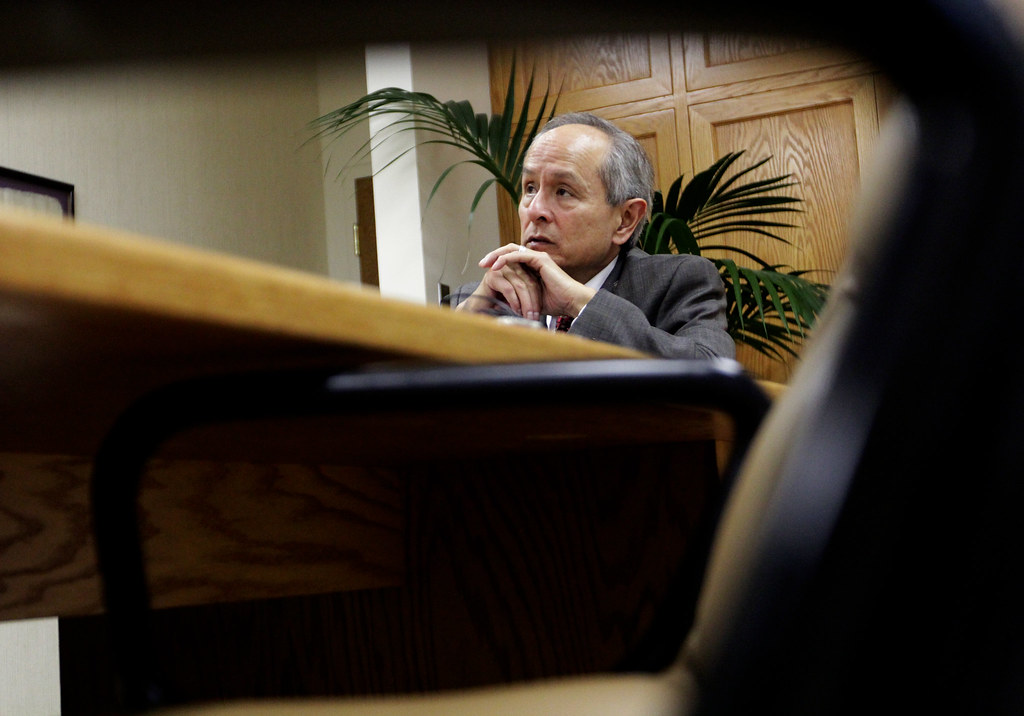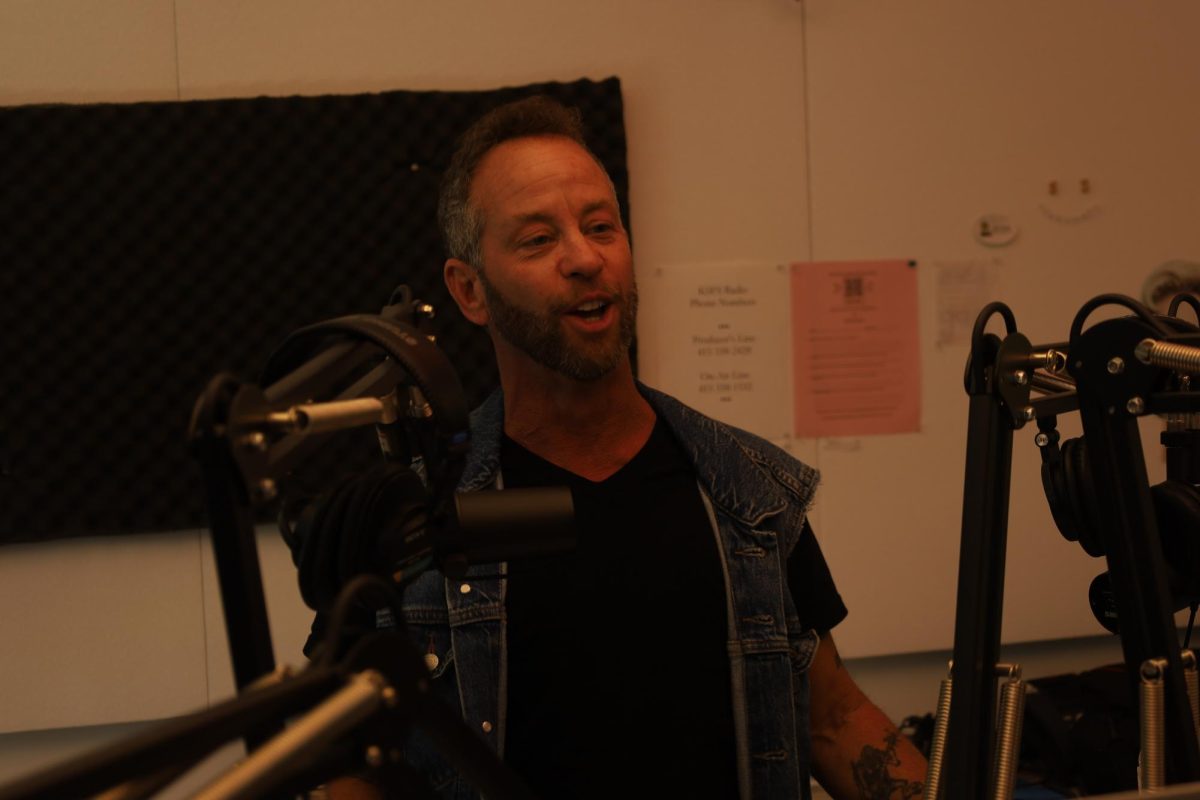
[soundcloud url=”http://api.soundcloud.com/tracks/78039859″ params=”” width=” 100%” height=”166″ iframe=”true” /]
At the outset of his second semester as president of SF State, Leslie E. Wong sat down with Xpress Editor-in-chief Kale Williams. In part two of our three-part interview, Wong discusses changing racial demographics in California, the possible closure of the City College of San Francisco and the future of online education at SF State.
KW: I was reading an article the other day that has demographic projections for the state saying that the Hispanic population will soon be the largest single demographic in the state and that the population at SF State is following closely to those demographic trends. What, if anything, is SF State currently doing, or is going to need to do to serve the changing demographics of the student population?
LEW: There is a question that is a little bit bigger than demographics, but I’ll get to that in a second. The question that my cabinet and I are talking about now is, particularly not knowing where the budget is, right now we know (what) the governor’s budget is and it looks pretty positive for higher education. Five percent, five percent, four percent, four percent. We can’t complain. Life is good, but the issue is, does it get passed?
We’re still in the legislative process and it has to go through its course before we really know what our budget is and what does the governor get. In the face of that budget unknown, even though we kind of have a sense of where it will be, the issue of how to respond to growth, what size should we be and responding to the large number of students who want to come here from southern California, Texas, (and) Asia is something that we’re starting to do a lot of very focused thinking about.
So before we get in to the Hispanic population, the bigger question for me is what is really the ideal size for San Francisco State? That’s not a simple question. We’re roughly 30,000 students right now, and we might float up or down plus or minus two percent from that. Is that the right size? And what if the governor gives us five percent this year and then zero, zero, zero. You and I talked about it at the last interview, a lot of things flow from that primary question about residence halls, availability, on-campus food services and transportation. It’s a big question.
Now let me move to the question you asked. The fastest growing population is the Asian-American population. The largest population will be Hispanic. So you have two ethnic demographics that are already pretty apparent on campus. We’re asking ourselves: how do we respond to that in culturally appropriate and culturally sensitive ways? That’s what good universities do. How do you realign your services?
I have some concerns about a dwindling African-American population on campus. Are we serving the population of San Francisco? And if they’re not living in San Francisco, is that a problem? Is that the kind of thing for the city and the mayor? What’s our role in that? We’re still gathering data to answer the question of “will the Hispanic popualtion or Asian-American population, will they persist in school?” Some states are finding that students are showing up for a year and then leaving after a year, so we’re still learning. We’re sort of early in that process.
What I’m very pleased with is when I meet the college of ethnic studies and the student service people, the sort of design and delivery of culturally appropriate and culturally sensitive services is really quite effective. We’re very good at that and we’ll need to get better because the scale of it, as you say, is just going to get bigger. So the issue is; are we keeping up? I going to be asking people to make sure they teach me about that and make sure because my biggest disappointment is if we have this rich and robust cultural population and they’re here for two years. I want them to graduate. I want to be able to had them a diploma. We’re so early, we’re asking oursleves a lot of retention quesitons. If they’re not staying, why not? That’s still an unresolved picture for us. So I’d rather have people thinking ahead so that their radar is nice and finely tuned so that the fact that we have to move quickly, we’ll be able to do that.
KW: Going off the idea of accesibilty to certain populations, there has been a lot in the news recently about the trouble City College of San Francisco has been having. They’re up for review in March, I believe, and if they are forced to close down, which is a possibility, do you have any plans to reach out to potential transfer students who want to come to SF State?
LEW: If they’ve earned credit and they meet our transfer requirements that are set forth, we call them 1440 requirements, they get in. The issue will be the large number of, for example, first-year students who haven’t met those 1440 requirements. What happens to them? That’s a big issue.
We’re trying to work with City College to find out how big that number is, what implications that might hold and we’re trying to do it in a way where we don’t get in their way. They’ve got a March 15 deadline, and the last thing I want to do is be a drag on their effort to meet their obligations in mid-March. We’re certainly talking and gathering information and we’re asking ourselves: What are we allowed to do? What can we do? A lot of good people are already starting to work on different models that will help us respond. There have been some preliminary discussions that the mayor has led, just to brief him on the whole education issue that is in San Francisco. He’s starting to process a lot of that as well. City College is working very diligently and a lot of people are putting out a lot of good effort to make sure they continue to serve San Francisco.
KW: We talked a little bit last time about online education, and since then the governor has rolled out a somewhat aggressive pilot program in a press conference at San Jose State last month, I believe. I’m wondering what role you see online education playing at San Francisco State. What are the benefits and drawbacks?
LEW: That’s a great question. We can get you more information. I know it’s being put together. Prior to Udacity and San Jose, I had asked the provost to look at the winter session to see if we might give preference to online courses for students. So the new AVP (Associate Vice President), Jose Galvan, took up the challenge and said “Let’s experiment. Let’s find out what the student response would be to more online offerings during December and January,” and the turnout was phenomenal. Just absolutely phenomenal. We can get you those numbers as soon as Jose has them, but it told us that when we offered students online work, they turned out in large numbers. It was quite an eye-opener for us.
The numbers, at least the preliminary numbers I saw, were really encouraging for us to continue to look at online work during the summer, maybe next winter, maybe even as some piece that compliments the Fall and Spring semesters. It was pretty encouraging for a first step, it was really a good one. There is a lot of discussion, we don’t have any degreee programs online, but we do have a lot of hybrid coursework. That’s not a bad niche to be in, to be quite honest.
Studies tell us that students still prefer face-to-face when they can do that. Online right now is serving to supplement that face-to-face stuff. I’m really encouraged by what we saw with our experiment this winter. There’s a lot of discussion on campus about where our first baccalaureate program will be. I know a lot of folks are thinking about it. I know that our online presence is a lot more robust than many would have expected. It surprised us all. It’s a great tool.
KW: I hate to ask for a prediction of the future, but I’m wondering if you have a rough timeline for when any online-only courses will be taking place during normal semesters.
LEW: I’ll have to defer to the provost for that. There are a lot of discussions going on among the deans and department heads and we want to be able to use our limited dollars, smartly, if I can invent a word, let’s say wisely. We want to do it at the right place and the right time, so that discussion is ongoing in the colleges right now.
In tomorrow’s third and final installment, Wong discusses promoting the Gator brand, the new leadership at the top of the CSU and his vision for the future of SF State.





